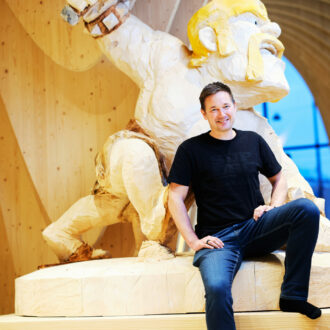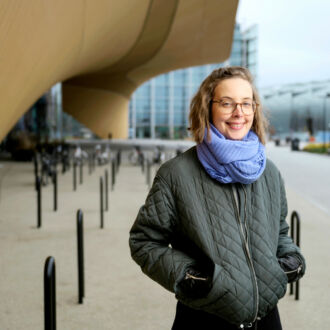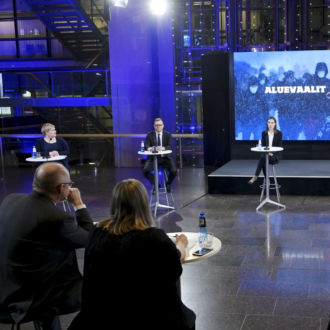The International Day of Happiness takes place annually on March 20, accompanied by the World Happiness Report, a publication of the UN Sustainable Development Solutions Network. In 2024, Finland occupies the top spot on the report’s list of the happiest countries in the world for the seventh time in a row.
The other Nordic countries usually join Finland in the top ten – this year, they are all in the top seven: Denmark is second, Iceland third, Sweden fourth and Norway seventh.
Life evaluations
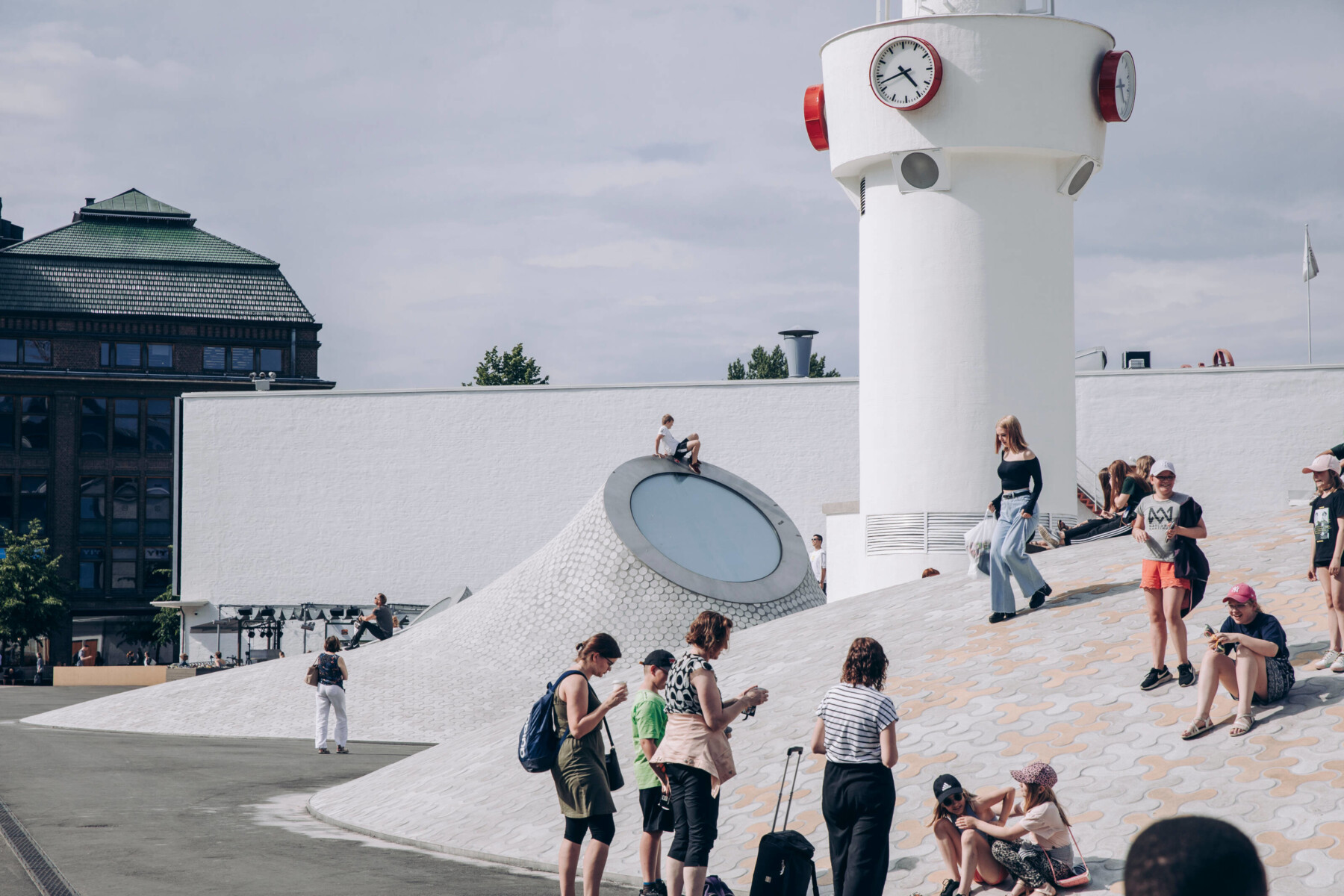
Enjoying life: These strange mounds and windows are part of Amos Rex, a museum of contemporary art in Helsinki and a great place to hang out.Photo: Aleksi Poutanen/Helsinki Partners
The 158-page World Happiness Report and the International Day of Happiness offer a chance to discuss the foundations of happiness and how to nurture it. In more ways than one, this may also provide a counterweight to unhappy news about climate change and war.
The report compares the answers to one of the more than 100 questions in the Gallup World Poll. The question is: On a scale of zero to ten, where do you place your own life (with zero being the worst possible life and ten being the best possible life)?
The answers, called “life evaluations” by the authors of the report, provide a measurement of people’s contentedness with life. The report uses an average of the three most recent years to arrive at its list of the happiest countries.
This year’s edition further divides the happiness listings into four age groups for comparison. In Finland, Denmark, Sweden and Norway, the oldest age group (60-plus) was happier than the others, and the youngest (under 30) was the least happy.
The authors also try to identify general “predictors” of happiness, including GDP per capita, healthy life expectancy at birth, social support (having people you can count on if you’re in trouble), freedom to make life choices, generosity (whether or not people donate to charity) and perception of corruption (in government and business).
Infrastructure of happiness
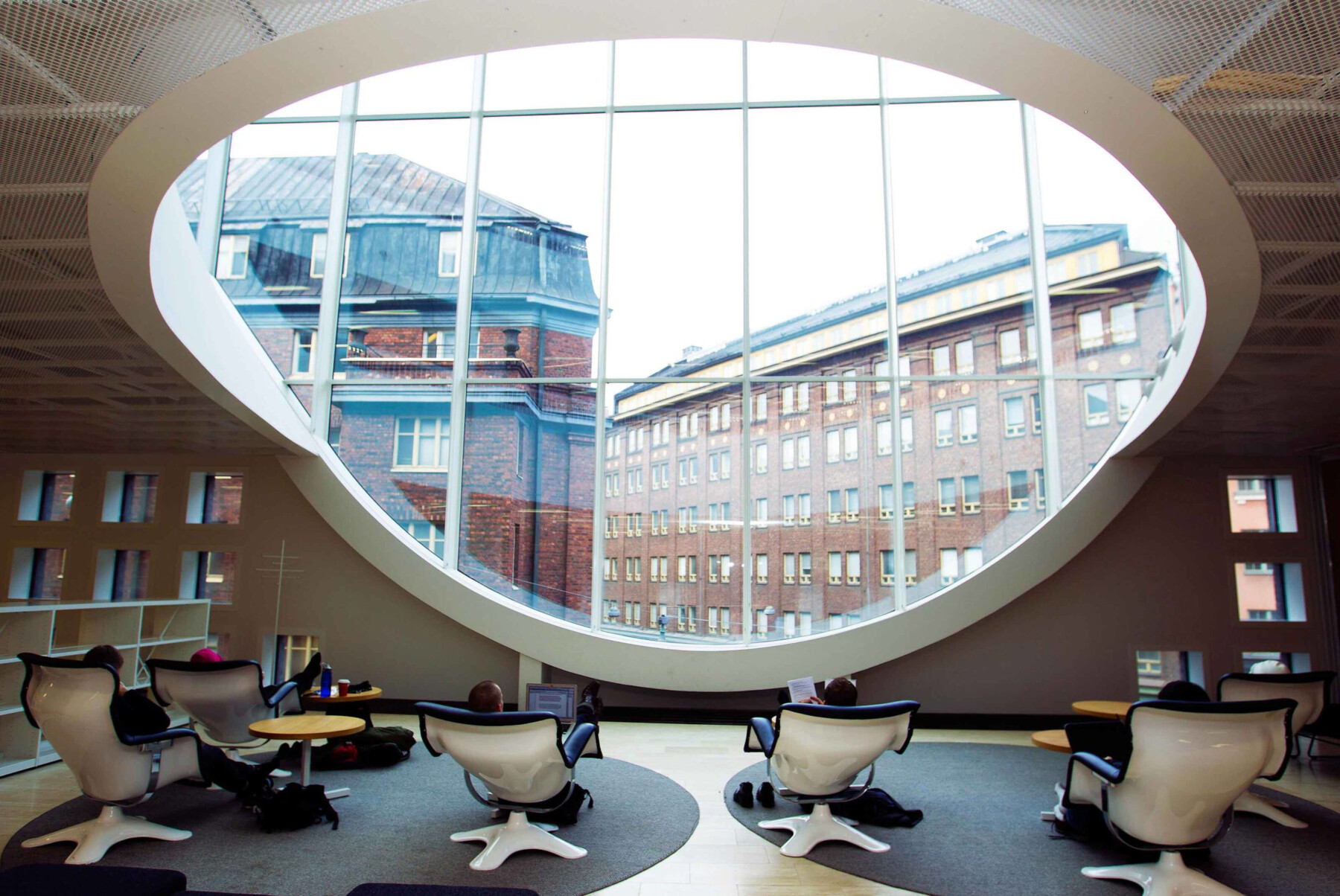
A window lets the light in for readers at Helsinki University’s main library. All levels of education in Finland are free or charge only very nominal fees.Photo: Linda Tammisto/Helsinki Partners
Finland and the other Nordic countries are strong in those predictor categories and in other aspects of society that contribute to happiness. (Many of them are included in the box about international comparisons, at the end of this article.) Finland has fostered an infrastructure of happiness, constructing and maintaining the culture and the social institutions that form the basis and framework for individuals and communities to build their happiness.
Happiness doesn’t just – happen. Countries can take steps to encourage it. Research shows life satisfaction correlates with a well-functioning society that provides healthcare, social security and labour market access.
If we zoom out for a wider perspective, we can see that happiness should be a policy goal. Finland has a multiparty system with room for numerous different platforms, but you can still say that happiness is one of the overall policy goals.
On a more individual level, even readers who are not government policy makers can go to the Find Your Inner Finn website, run by ThisisFINLAND’s friends over at Visit Finland. It offers a five-part masterclass in the “Finnish happy lifestyle,” complete with video lessons, tasks for further study and a Master of Happiness certificate.
Happiness starts early

Kids play in a snowy park in the central western Finnish city of Tampere.Photo: Laura Vanzo/Visit Tampere
Democracy and good governance, which play pivotal roles in the infrastructure of happiness, are grounded on transparency; accountability; impartiality; rule of law; full protection of human rights, including those of minorities; absence of political violence; and lack of corruption.
Free and fair elections are covered by independent media outlets for a population that possesses a great deal of media literacy.
Finnish society is built on trust, and trust is based on openness – freedom of communication and information, as well as opportunities for citizens and civil society to get involved in improving society. High levels of trust and freedom contribute to Finnish happiness.
By the same token, fairness and equality are important elements of happiness, and of Finnish society. Equality means not only gender equality, but also an equal start to life, made feasible by free prenatal care for mothers and generous paid parental leave. It also means equal access throughout life to education and healthcare, both of which are free or charge only very nominal fees.
The nature of happiness

Even in Helsinki, you’re never far from a park or a patch of forest.Photo: Susanna Lehto/Visit Finland
Last but not least, nature is always nearby in Finland. Even in urban areas, you’re never more than a ten-minute walk from a park or forest. Unspoiled nature has been shown to contribute to wellbeing and happiness.
Back in 2012, the first World Happiness Report linked nature to happiness. It defined “sustainable development” as a combination of environmental sustainability, social inclusion and human wellbeing. The authors then wrote, “The quest for happiness is intimately linked to the quest for sustainable development.”
The subsequent editions of the report have researched happiness from all sorts of angles, but the gist has remained the same. And if you’re seeking a recipe for happiness, that definition of sustainable development is still a good place to start.
Finland’s place in the worldFinland’s repeated success in the World Happiness Report stems from factors that also show up in other reports, indexes and international comparisons. At the time of writing, according to various organisations and surveys, Finland is:
|
By ThisisFINLAND staff, March 2024


